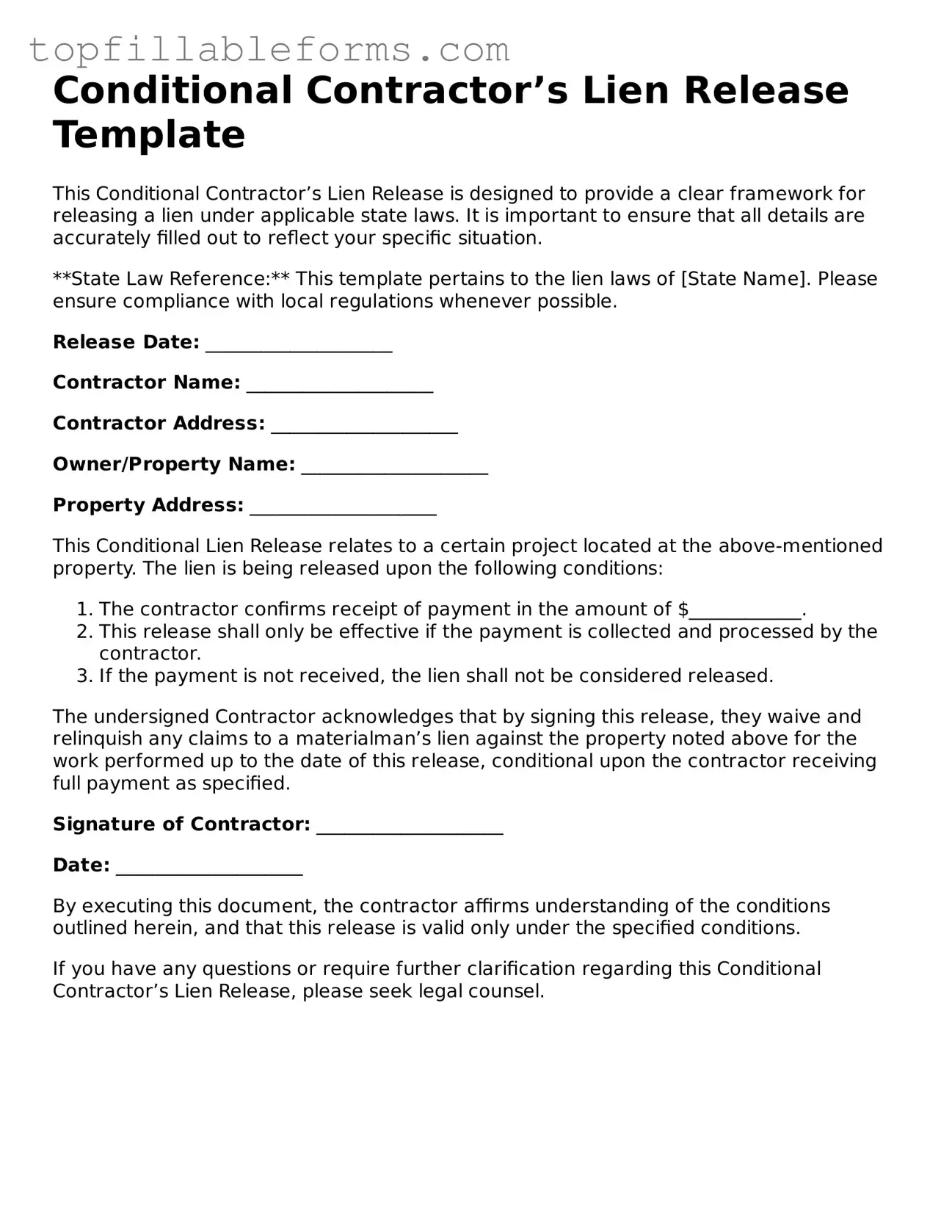Conditional Contractor’s Lien Release Template
This Conditional Contractor’s Lien Release is designed to provide a clear framework for releasing a lien under applicable state laws. It is important to ensure that all details are accurately filled out to reflect your specific situation.
**State Law Reference:** This template pertains to the lien laws of [State Name]. Please ensure compliance with local regulations whenever possible.
Release Date: ____________________
Contractor Name: ____________________
Contractor Address: ____________________
Owner/Property Name: ____________________
Property Address: ____________________
This Conditional Lien Release relates to a certain project located at the above-mentioned property. The lien is being released upon the following conditions:
- The contractor confirms receipt of payment in the amount of $____________.
- This release shall only be effective if the payment is collected and processed by the contractor.
- If the payment is not received, the lien shall not be considered released.
The undersigned Contractor acknowledges that by signing this release, they waive and relinquish any claims to a materialman’s lien against the property noted above for the work performed up to the date of this release, conditional upon the contractor receiving full payment as specified.
Signature of Contractor: ____________________
Date: ____________________
By executing this document, the contractor affirms understanding of the conditions outlined herein, and that this release is valid only under the specified conditions.
If you have any questions or require further clarification regarding this Conditional Contractor’s Lien Release, please seek legal counsel.
